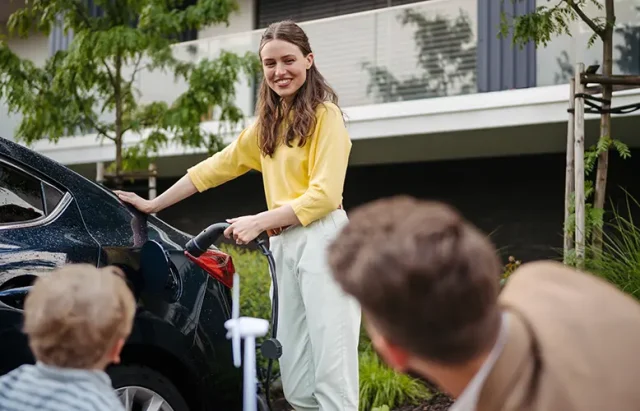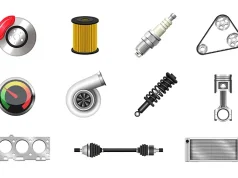
The dawn of electric vehicles (EVs) has revolutionised the way we perceive and approach travel. Once a niche market, green cars are now surging into the mainstream, propelled by advancements in technology and a growing collective consciousness about environmental sustainability. The allure of cruising down open roads with minimal carbon footprint has caught the imagination of eco-conscious travellers and tech enthusiasts alike.
This surge is supported by an expanding infrastructure that promises to make electric car travel not just a possibility but a pleasure. Whether you’re a seasoned EV traveller or considering your first electric expedition, this guide aims to illuminate the path to a greener, more efficient way of exploring the world on four wheels.
Planning Your Journey
Embarking on a journey with an electric vehicle requires a shift in mindset and a bit of pre-trip strategising to ensure a seamless experience. Unlike traditional cars, where gas stations are ubiquitous, and refuelling takes mere minutes, green cars invite you to plan your route with a bit more precision. But fear not, for with a little preparation, your electric road trip can be as smooth as the quiet hum of your EV’s motor.
Route Selection
The cornerstone of a successful electric road trip is selecting the right route. It’s essential to chart a course that not only takes you through scenic landscapes and desired destinations but also aligns with the network of available charging stations. Utilise dedicated EV navigation apps or websites that can help you plot your journey with your vehicle’s needs in mind. These tools often provide real-time availability, charging speeds, and even user reviews to ensure you’re never left in the lurch.
Charging Time and Stops
One of the unique aspects of travelling with an electric car is incorporating charging stops into your journey. It’s not just about where you can power your vehicle but how long it will take. Familiarise yourself with the types of stations along your route. Planning your meal breaks or sightseeing around these stops can turn a necessary pause into a pleasant interlude. This is one of the benefits of EV chargers at commercial settings that cannot be overstated. These chargers are often located at shopping centers, restaurants, and other convenient locations, allowing you to make the most of your charging time. Instead of simply waiting for your car to charge, you can run errands, enjoy a meal, or explore local attractions. This not only makes the charging process more enjoyable but also integrates seamlessly into your travel itinerary.
Accommodations
The final piece of the planning puzzle is ensuring your overnight stays are EV-friendly. Many hotels, resorts, and Airbnb listings now boast charging facilities, allowing you to rest easy as your car replenishes its batteries. When booking accommodations, prioritise those that offer this amenity or consider nearby public charging options to plan accordingly.
How to Charge an EV
The backbone of electric vehicle travel is undoubtedly the charging infrastructure, a network that’s rapidly expanding to meet the growing demand for EVs. Understanding chargers is key to planning and enjoying your trips, ensuring that you’re never too far from a power boost.
Types of Charging Stations
Electric vehicle charging stations come in various shapes and sizes, each designed to meet different needs:
- Level 1 Charging: The slowest form of charging, often using a standard household outlet. While not practical for quick charges during a trip, it’s an option for overnight charging at a home base or accommodations without dedicated EV facilities.
- Level 2 Charging: This is the most common type of public charging station, providing a faster charge than Level 1. Ideal for overnight charges or extended stops. Level 2 can replenish your EV’s battery in several hours, making it perfect for a leisurely lunch break or an afternoon exploring a new city.
- DC Fast Charging (DCFC): The quickest option available, DCFC stations can add significant range to your battery in just 20-30 minutes. Strategically placed along major roads and in urban centres, they’re the best pick for quick pit stops to recharge and get back on the road.
Payment and Access
Navigating the payment systems and access methods for various charging networks can be one of the more complex aspects of EV travel. Many networks require a membership or a specific app, while others may offer pay-as-you-go via credit card. There are also electric car charging apps like OVO Charge powered by Bonnet, which makes drivers able to access multiple networks with just one application.
Familiarise yourself with the major networks along your route and set up any necessary accounts in advance. It’s also wise to have a backup plan, as stations can be occupied or out of service. Apps that provide real-time status updates for chargers can be invaluable in these situations.
Driving Experience
Driving an electric vehicle is a distinct experience that sets it apart from traditional internal combustion engine vehicles. From the serene quietness of the cabin to the instant torque at your disposal, EV travel is something that not only needs to be planned for but also savoured.
Range Consideration
The concept of “range anxiety” is often cited as a concern for potential EV travellers, but with a bit of planning and understanding of your vehicle’s capabilities, it becomes a manageable aspect of the journey. Various factors, including driving style, terrain, and weather conditions, can influence EV range.
Adopting a more conservative driving approach, such as maintaining steady speeds and minimising heavy acceleration, can help maximise your vehicle’s range. Additionally, many modern EVs offer eco-driving modes and regenerative braking, which can help by converting braking energy back into battery power.
Comfort and Convenience
The serenity of an electric drive is unmatched. The absence of engine noise provides a peaceful atmosphere, allowing you to enjoy the sounds of nature, converse with passengers without raising your voice, or listen to music without background interference. This quietude, combined with the smooth acceleration that electric motors provide, contributes to a less fatiguing and more enjoyable long-distance driving experience.
EVs are often equipped with the latest in-car technology and connectivity, enhancing the travel experience. Features like advanced navigation systems can integrate charging station locations and availability into your route planning, ensuring you’re always aware of your next stop.
Maximising Enjoyment
To make the most of your electric road trip, consider integrating the charging stops into your journey as part of the experience. Use charging time as an opportunity to explore the local area, enjoy a meal, or simply relax. Many stations are located near amenities or interesting attractions, turning a necessary stop into a mini-adventure.
Conclusion
In embracing the adventure of travelling with an electric car, we unlock a journey that’s as kind to the environment as it is enriching to our experiences. With careful planning and an appreciation for the unique aspects of EV travel, the road less travelled becomes a path to sustainable exploration.





